Sources
- Theodore Baker (1919). "Baker's Biographical Dictionary of Musicians". G. Schirmer Inc.: 758.
{{cite journal}}: Cite journal requires|journal=(help)
Eduard Reuss (16 September 1851 - 18 February 1911) was a German composer, pianist, music educator, and writer on music. He is best known for his writings on composer Franz Liszt, including a highly thought of biography Ein Lebensbild (1898). He also authored the book Liszts Lieder (1906) and penned several essays on the life and works of Liszt. As a composer, he mainly produced works for solo piano and also made arrangements of several works by Liszt.
Born in New York City to German immigrants to the United States, Reuss lived most of his life in Germany. He began his musical training at the age of 11 in Göttingen where he was a pupil of composer and music critic Eduard Krüger (1807–1885) from 1862 to 1869. He then became a disciple of Franz Liszt, studying with the great composer from 1870 to 1879. He was also a student of Marie Gabriel Augustin Savard in Paris in 1876–1877.
In 1880, Reuss joined the teaching staff at the Karlsruhe Conservatory where he remained until 1896 when he joined the faculty of the Wiesbaden Conservatory. He was appointed director of that institution in 1899 where he remained until 1902. He then traveled to the United States with his wife, the dramatic soprano Luise Reuss-Belce, whom he had married earlier in 1885. The couple toured together through the US with Eduard accompanying his wife on the piano in a series of concerts in 1902–1903.
{{cite journal}}: Cite journal requires |journal= (help)
Franz Liszt was a Hungarian composer, virtuoso pianist and teacher of the Romantic period. With a diverse body of work spanning more than six decades, he is considered to be one of the most prolific and influential composers of his era and remains one of the most popular composers in modern concert piano repertoire.

Karl Klindworth was a German composer, virtuoso pianist, conductor, violinist and music publisher. He was one of Franz Liszt's pupils and later one of his closest disciples and friends, being also on friendly terms with composer Richard Wagner, of whom he was an admirer. He was highly praised by fellow musicians, including Wagner himself and Edward Dannreuther. Among his pupils were Hans von Bülow, Georgy Catoire, and Ethelbert Nevin.
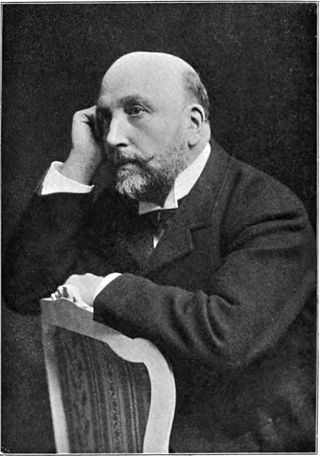
Sir Alexander Campbell Mackenzie KCVO was a Scottish composer, conductor and teacher best known for his oratorios, violin and piano pieces, Scottish folk music and works for the stage.

Freiherr Hans Guido von Bülow was a German conductor, virtuoso pianist, and composer of the Romantic era. As one of the most distinguished conductors of the 19th century, his activity was critical for establishing the successes of several major composers of the time, especially Richard Wagner and Johannes Brahms. Alongside Carl Tausig, Bülow was perhaps the most prominent of the early students of the Hungarian composer, virtuoso pianist and conductor Franz Liszt; he gave the first public performance of Liszt's Sonata in B minor in 1857. He became acquainted with, fell in love with and eventually married Liszt's daughter Cosima, who later left him for Wagner. Noted for his interpretation of the works of Ludwig van Beethoven, he was one of the earliest European musicians to tour the United States.
The "War of the Romantics" is a term used by some music historians to describe the schism among prominent musicians in the second half of the 19th century. Musical structure, the limits of chromatic harmony, and program music versus absolute music were the principal areas of contention. The opposing parties crystallized during the 1850s. The most prominent members of the conservative circle were Johannes Brahms, Joseph Joachim, Clara Schumann, and the Leipzig Conservatoire, which had been founded by Felix Mendelssohn. Their opponents, the radical progressives mainly from Weimar, were represented by Franz Liszt and the members of the so-called New German School, and by Richard Wagner. The controversy was German and Central European in origin; musicians from France, Italy, and Russia were only marginally involved. Composers from both sides looked back on Beethoven as their spiritual and artistic hero; the conservatives seeing him as an unsurpassable peak, the progressives as a new beginning in music.
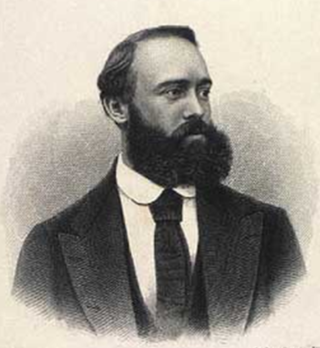
Eduard Lassen was a Belgian-Danish composer and conductor. Although of Danish birth, he spent most of his career working as the music director at the court in Weimar. A moderately prolific composer, Lassen produced music in a variety of genres including operas, symphonic works, piano works, lieder, and choral works among others. His most successful pieces were his fine vocal art songs for solo voice and piano which often used elements of German and Belgian folk music.
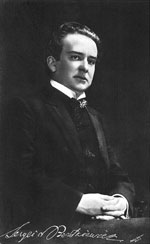
Sergei Bortkiewicz was a Russian-born Austrian Romantic composer and pianist. He moved to Vienna in 1922 and became a naturalized Austrian citizen in 1926.

Adamus List was the father of composer and pianist Franz Liszt.

José Vianna da Motta was a Portuguese pianist, teacher, and composer. He was one of the last pupils of Franz Liszt. The José Vianna da Motta Music Competition was founded in 1957 in his honor.

Julius Engelbert Röntgen was a German-Dutch composer of classical music. He was a friend of Liszt, Brahms and Grieg.

Frederic Archibald Lamond was a Scottish classical pianist and composer, and the second-last surviving pupil of Franz Liszt.
The radical change Franz Liszt's compositional style underwent in the last 20 years of his life was unprecedented in Western classical music. The tradition of music had been one of unified progression, even to the extent of Johannes Brahms' First Symphony being known as "Beethoven's Tenth". Beethoven's own three periods of composition are monolithic and united. Liszt's, by comparison, seem deconstructivist. Replacing pages which in Liszt's earlier compositions had been thick with notes and virtuoso passages was a starkness where every note and rest was carefully weighed and calculated, while the works themselves become more experimental harmonically and formally.

Alfred Reisenauer was a German pianist, composer, and music educator.

The Allgemeiner Deutscher Musikverein was a German musical association founded in 1861 by Franz Liszt and Franz Brendel, to embody the musical ideals of the New German School of music.

Max Erdmannsdörfer was a German conductor, pianist and composer.

Conrad Eduard Reinhold Ansorge was a German pianist, teacher and composer.

Adalbert von Goldschmidt was an Austrian composer, poet and satirist of Jewish origin.
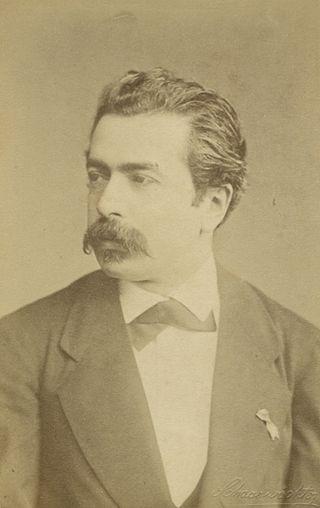
Józef Wieniawski was a Polish pianist, composer, conductor and teacher. He was born in Lublin, the younger brother of the famous violinist Henryk Wieniawski. After Franz Liszt, he was the first pianist to publicly perform all the études by Chopin. He appeared with Liszt in recitals in Paris, London, Copenhagen, Stockholm, Brussels, Leipzig and Amsterdam.

Georg Liebling was a German pianist and composer. Part of the Liebling family of musicians, he had an active international career as a concert pianist and accompanist from the 1880s into the 1920s. He also worked as a piano teacher for most of his life, beginning that occupation at the age of 16 and continuing up until his death more than 50 years later. He taught on the faculties of the Kullack Conservatory in Berlin (1881-1889), the Guildhall School of Music in London (1898-1906), and the Hollywood Conservatory of Music in the early 1930s in addition to teaching privately in Berlin, Munich, and New York City. As a composer, his salon compositions are noteworthy, especially the Air de Ballet and Romance; a gavotte, and the vocal Lieblingswalzer. Also notable is his 1908 opera Die heilige Katharina.
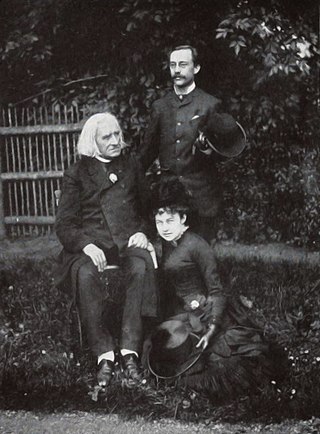
Carl V. Lachmund was an American classical pianist, teacher, conductor, composer, and diarist. He was a student of Franz Liszt for three years, and his detailed diaries of his time with Liszt provide an invaluable insight into that composer’s teaching methods and some aspects of his character. He founded the Lachmund Conservatory in New York and ran it for 22 years, and he founded the Women's String Orchestra, conducting it for 12 seasons.